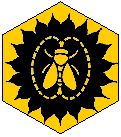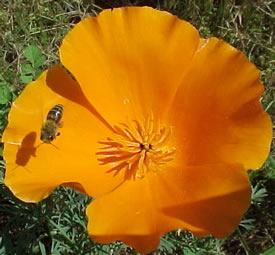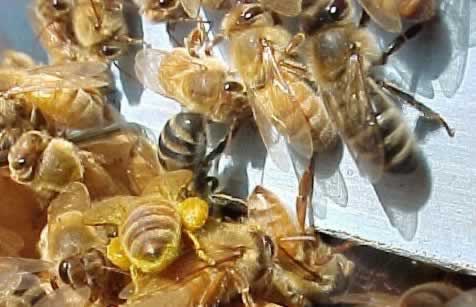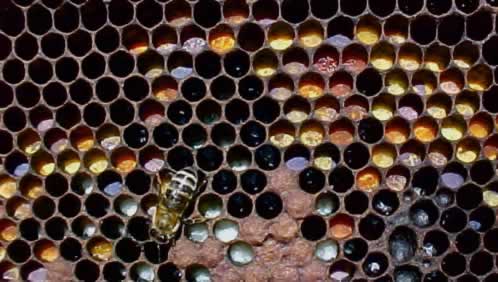Worker Honey Bees Collecting Bee Pollen and Storing it in Honeycombs
Honey Bee Picture Gallery
- Bee Pollinating Avocado Blossom
- A Honeybee Sitting on a Naked Lady
- Instrumentally Inseminating a Queen Bee
- Strange Drone Bee Mutations
- Beeing Intimate with a Flower
- A Cordovan Queen with Her Eggs
- Carniolan Bee on a Poppy
- Bee Making Orange Honey
- Honeybee Enjoying a Water Lily
- Honey Bee Taking a Sip of Water
- Italian Queen Bee Being Fed
- Queen Bee Hatching from a Queen Cell
- Apple Blossoms Pollinated by Honeybee
- Africanized Honeybee Queen
- Queen Bee being Marked and Clipped
- Varroa Sensitive Hygiene VSH Queen
- Honey Bee Queen Cells
- Bee Pollen and Bee Bread
- Multiple Bees Working a Camellia
- Queen Bee Introduction
- Grafting Queen Cells
- Honeybees and Gourd Art
- Ancient Egyptian Bee Hieroglyphics
Pollen from flowers is the food which honeybees bring back to the beehive to feed the baby bee larva. Pollen is high in protein and rich in nutrients. The worker bees collect the pollen grains from the male parts of the flowers, known as anthers. They use a special structure on their legs to comb the tiny pollen grains off of their hairy bodies and pack it onto another structure on their rear legs called pollen baskets.
When the pollen foragers return to the bee colony they scrape the pollen off their legs and place it into an empty cell of the honeycomb. Another house bee will come by soon and pack it tightly down for storage. During storage, beneficial microbes added by the bees, known as probiotics, will partially digest the pollen making the nutrients more available to the bees. At this point it is known as bee bread and is ready for use as food. Nurse bees who are only 5-15 days old, will eat this pollen which will then be converted into royal jelly by a special gland in their head, this will be fed to the young larva for three days. If the royal jelly is fed beyond three days, the larva will begin development as a queen bees. Thus the difference between a worker who may live only 6 weeks and a queen, who can live several years, is controlled by the diet she is fed as a larva.
When the pollen foragers return to the bee colony they scrape the pollen off their legs and place it into an empty cell of the honeycomb. Another house bee will come by soon and pack it tightly down for storage. During storage, beneficial microbes added by the bees, known as probiotics, will partially digest the pollen making the nutrients more available to the bees. At this point it is known as bee bread and is ready for use as food. Nurse bees who are only 5-15 days old, will eat this pollen which will then be converted into royal jelly by a special gland in their head, this will be fed to the young larva for three days. If the royal jelly is fed beyond three days, the larva will begin development as a queen bees. Thus the difference between a worker who may live only 6 weeks and a queen, who can live several years, is controlled by the diet she is fed as a larva.
Beginning beekeepers click here for information on getting started in beekeeping
What's happening in the Bee World
 ©2014 Glenn Apiaries
©2014 Glenn Apiaries
|
Glenn Apiaries | Queen Rearing | Honeybee genetics | Bee breeding | Links| Pattern Press |


